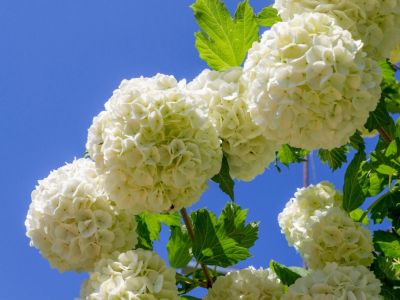Why Won’t My Viburnum Bush Flower?
Viburnum problems are few and far between, but one of the most perplexing issues growers of this shrub face is a lack of blooms. If this is the first year you’re growing a viburnum or you moved and found a viburnum in the new landscape, it may be that the bush is simply spent already. Most viburnum species only bloom for a few short weeks in the early summer and young viburnums almost always require a few years to establish their root systems before presenting their colorful display. Your mature viburnum needs full sun to bloom at its best and well-draining, acidic soil. Too much nitrogen in the soil, or added as a fertilizer, will encourage your bush to put out a lot of lush, vegetative growth instead of putting energy into forming blooms. Viburnums near fertilized lawns may be soaking up excess nitrogen fertilizer from run-off – carefully fertilizing your lawn will both save you money and encourage your viburnum to bloom once most of the nitrogen in the soil is used up. Another common cause for non-flowering viburnums is improper pruning. Viburnum shrubs are one of the many ornamental shrubs that blooms on old wood, so waiting until after blooming to prune is recommended. Trimming them during dormancy will result in the loss of all or many of the flower-producing buds. At the end of each bloom season, it’s a good idea to give your viburnum a quick clip to encourage new growth and thin out the interior, removing any old canes that are no longer producing leaves. Now that you know some of the most common reasons for viburnums not blooming, you’ll be better able to manage this problem in the future.
